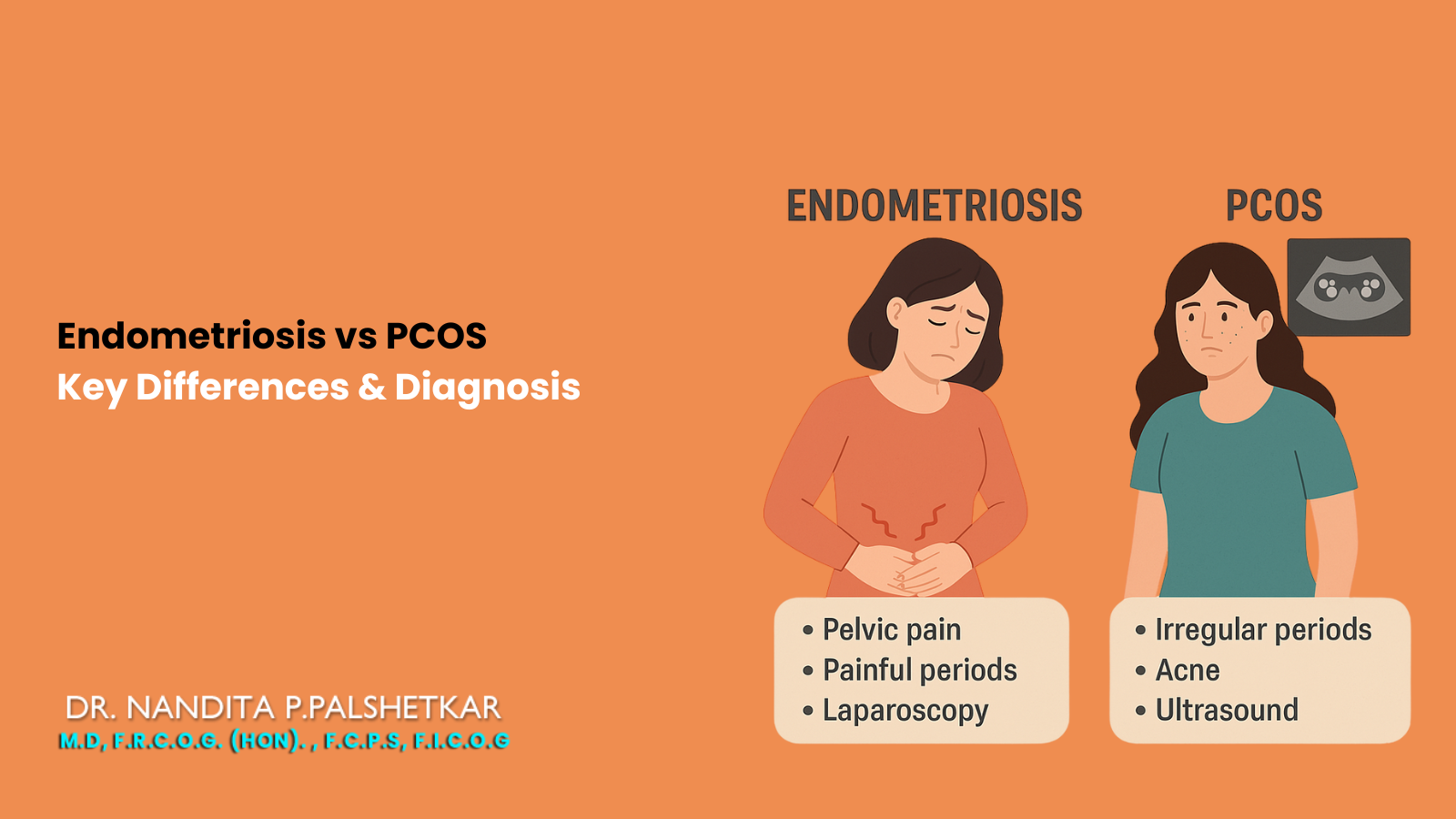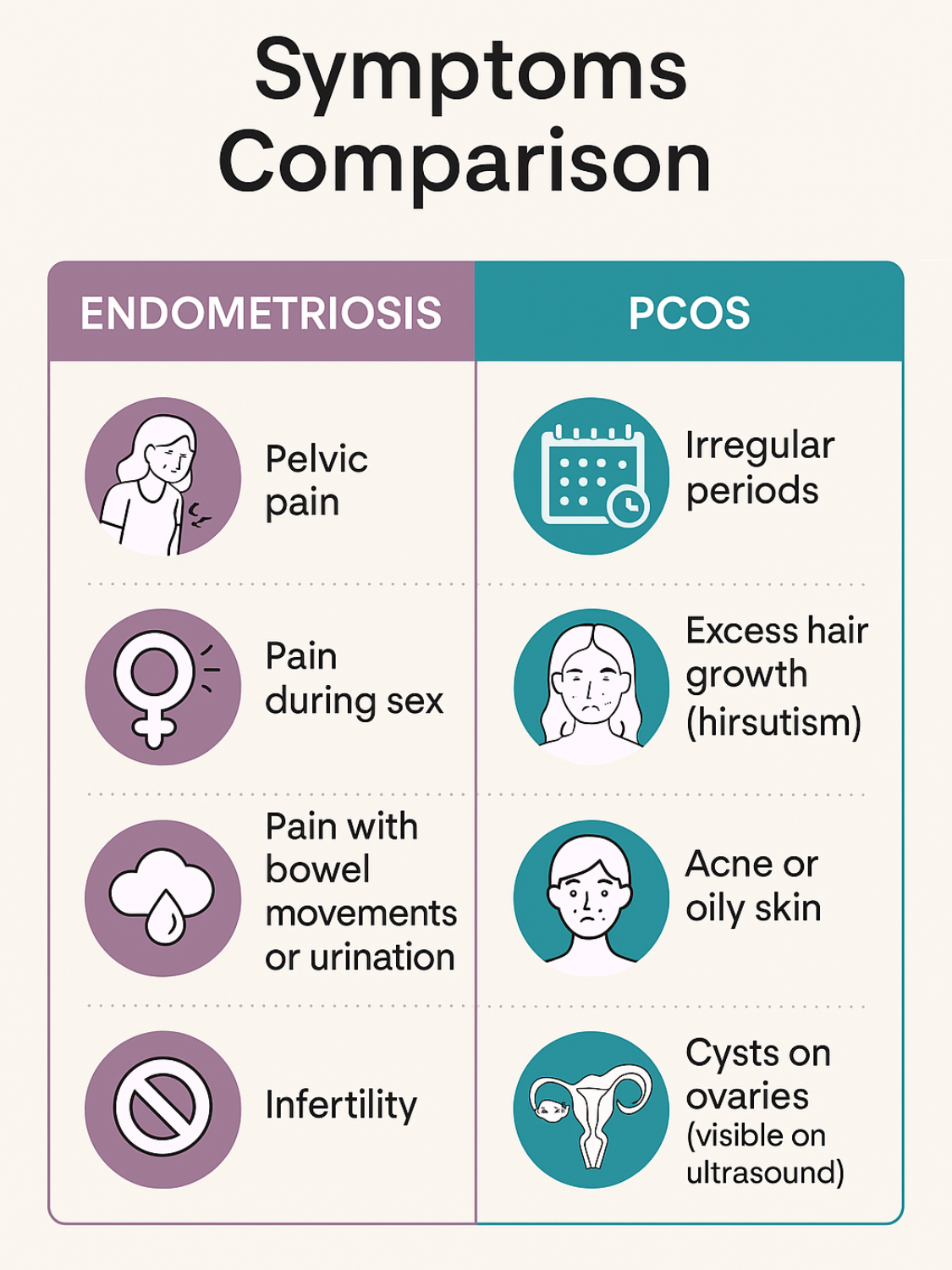

E-Brochure - Download Now!

Do you struggle with irregular periods, pain, or infertility? It could be endometriosis or PCOS, but how do you tell the difference? Both conditions affect women's reproductive health, and their symptoms often overlap, making it tricky to differentiate between them. Understanding the key differences between endometriosis and PCOS is crucial for effective treatment and management. This blog will help you identify these conditions, how they differ, and how each is diagnosed.
Endometriosis is a condition where tissue similar to the lining of the uterus grows outside of it, typically on the ovaries, fallopian tubes, and the pelvic lining. This abnormal growth can cause severe pelvic pain, especially during menstruation, and may lead to infertility.
Polycystic Ovary Syndrome (PCOS) is a hormonal disorder that affects how a woman’s ovaries work. Women with PCOS may experience irregular menstrual cycles, excess androgens (male hormones), and the formation of cysts in their ovaries. While PCOS doesn’t necessarily cause pain like endometriosis, it can lead to infertility and other health issues like weight gain and acne.

While endometriosis primarily involves the growth of tissue similar to the uterine lining outside the uterus, PCOS is characterised by hormonal imbalances and cysts on the ovaries. Here is a detailed comparison:
| Feature | Endometriosis | PCOS |
| Primary Cause | Growth of tissue outside the uterus | Hormonal imbalance and cyst formation |
| Symptoms | Pain (especially during menstruation) | Irregular periods, weight gain, hirsutism |
| Pain | Common, especially pelvic pain | Rarely causes significant pain |
| Infertility | Can cause infertility due to scar tissue | Can cause infertility due to hormone imbalance |
| Cyst Formation | May cause cysts in ovaries | Often results in cysts on ovaries (polycystic ovaries) |
| Hormonal Imbalance | Estrogen dominance, inflammation | Excess male hormones (androgens) |
If you'd like to dive deeper into endometriosis and understand how it affects women's health, be sure to read our in-depth article on What Is Endometriosis and How Does It Impact Women's Health? for more detailed insights.
Accurate diagnosis ensures proper treatment and management. Let’s explore the methods used by doctors to identify these conditions and how they guide the treatment plan:
The most accurate method to diagnose endometriosis is via laparoscopy, a surgical procedure where a camera is inserted into the abdomen to examine the organs. Other diagnostic tools include:
To diagnose PCOS, doctors typically rely on the following methods:
Once a proper diagnosis is made, the next step is exploring the available treatment options. While the treatments for endometriosis and PCOS may differ, the goal is to help manage symptoms, improve fertility, and enhance overall health. Here’s an overview of the most common and effective treatment approaches for both conditions:
Understanding the key differences between endometriosis and PCOS is essential for women facing reproductive health challenges. Endometriosis is more pain-focused and linked to tissue growth outside the uterus, while PCOS is related to hormonal imbalances and cyst formation. Early diagnosis is crucial for effective treatment and management. If you're experiencing symptoms, it's important to consult with a specialist for a precise diagnosis and appropriate treatment plan.
Confused about your symptoms? Whether you're dealing with the pain of endometriosis or the hormonal imbalance of PCOS, it’s crucial to get the right diagnosis and treatment plan. Meet with renowned fertility expert Dr Nandita P Palshetkar today to discuss your symptoms, understand your condition better, and take the next step toward better health. Book an appointment and initiate your journey toward improved reproductive health.